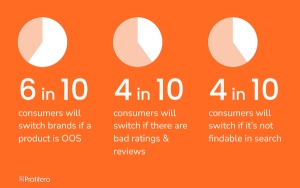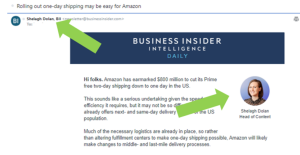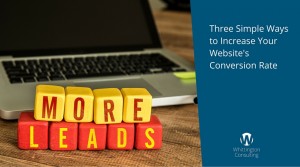Does your sales process meet the needs of today’s empowered buyer? Does your sales team rely on a scattershot approach of cold calls and unsolicited emails? Buyers have become a savvy bunch — they’re willing and able to conduct the research and identify solutions before coming into contact with a salesperson.
If your buyer doesn’t feel that your team has delivered value or insights into their process, they will likely disconnect until they are equipped and ready to negotiate a favorable contract. In order to remain involved in the process, your salespeople must be able to understand the buyer’s intent to deliver content to address it.
The modern buyer is looking to minimize friction in the sales process — just look at recent news on bots emerging from Google I/O & F8. While these bots might not be ready to replace sales professionals, they are going to disrupt the way in which buyers interact with salespeople. Buyers will still demand access to your content, however, they may come to prefer to engage with bots early in the process in much the same way that modern buyers research via Google or Youtube.
Consistent Personalization
Taking an increasingly strategic approach, top firms are enabling their salesforce with data-driven content. According to Forbes Insights, 44% of top performing organizations recognize the critical role of content. Dan Smoot, Salesforce executive vice-president, noted, “Content creates high-value conversations. In a world where information is readily available online, high-value conversations are more important than ever.”
As we all know, every buyer has different needs, which requires a sales team that can actively produce content from existing assets to personalize for each buyer. The more personalized the content, the better it will be received in a world of generic mass emails and an endless barrage of content.
As your sales team develops more autonomy, you need to assure that your messaging remains consistent. Regardless of where the buyer is in the journey, the information and the proposition must be one in the same; the transition from a marketing to the sales must be seamless. This handover doesn’t just create credibility and build trust for your business, it also strengthens the message in every step.
Anticipate Through Content
Today’s buyers demand relevancy and substance from your content. That’s why you need to make sure your prospective buyer will see the value in the content you send them. Your sales team must be a couple of steps ahead of your prospect and anticipate the kind questions they may have along every step of the sales cycle. This is why sales enablement technologies matter. Forbes Insights reports that 59% of leading companies have sales enablement tools that help them customize their message to each audience segment. These platforms (armed with analytics) allow companies to plan effective content to engage every customer at a personal level.
Accessibility is Imperative
Finally, there is the issue of accessibility. It doesn’t matter how brilliant your content is, if your sales reps can’t get a hold of it in time, it’s pointless. You must ensure that the information your sales team needs is, literally, one click away. This is another reason why many successful organizations turn to sales enablement. Aside from an avenue to create or curate content, it also serves as a repository where marketing and sales can organize their content.
Think of these two possible scenarios: Your client asks you for the most recent case study. You excuse yourself and waste 15-20 minutes checking the files in your computer. Desperate, you email your marketing executive for the information your client wants. Then you wait another 15 minutes for a response. By the time you give the case study to your client, he is no longer interested. With a sales enablement solution, you can readily present the information to your client within minutes of him asking for it. Not only did you answer your client’s need, you did so efficiently and with ease.
The buying process has changed dramatically, throughout the years. As buyers become more intelligent in navigating the buyer’s journey, there is an increasing challenge to adapt to this ever-changing environment. Whether you view this as a hurdle or an opportunity is completely up to you.
Business & Finance Articles on Business 2 CommunityThis article originally appeared on PandaDoc Paperless Blog and has been republished with permission.
Find out how to syndicate your content with Business 2 Community.
(59)
Report Post






